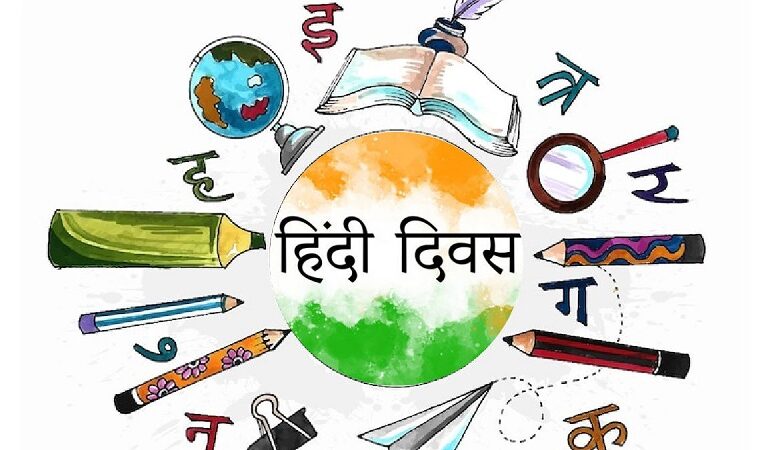Hindi Diwas: Celebrating India’s Rich Linguistic Heritage

Every year, on September 14th, India observes Hindi Diwas, a day dedicated to celebrating the Hindi language’s cultural and historical significance. Hindi, one of the world’s most widely spoken languages, holds a unique place in India’s diverse linguistic landscape. On this day, the President of India honors individuals for their outstanding contributions to Hindi in a prestigious ceremony held in Delhi.
Hindi, written in the beautiful Devanagari script, is recognized as the official language of India and serves as one of the Union government’s two official languages, sharing this distinction with English. Additionally, it holds the status of being one of the 22 scheduled languages of India. Hindi Diwas serves as a platform to promote and propagate the official language while nurturing a sense of patriotism and unity among the country’s diverse population.
The historical significance of Hindi Diwas dates back to September 14, 1949, when the Constituent Assembly of India officially adopted Hindi as the nation’s official language. This crucial decision was later incorporated into the Indian Constitution on January 26, 1950. The inaugural celebration of Hindi Diwas took place on September 14, 1953, marking a significant milestone in India’s linguistic history.
Notable figures such as Beohar Rajendra Simha, Hazari Prasad Dwivedi, Kaka Kalelkar, Maithili Sharan Gupt, and Seth Govind Das played instrumental roles in advocating for Hindi’s recognition as India’s official language. Among them, Beohar Rajendra Simha is celebrated for his contributions, including illustrations in the original final manuscript of the Indian Constitution.
Hindi Diwas serves as a day of vibrant literary and cultural festivities across India. Schools and colleges nationwide organize a wide array of activities, including Hindi language competitions, to engage students and foster an appreciation for the language. The celebration pays homage to the first Prime Minister of India, Jawaharlal Nehru, who initiated the observance of Hindi Day on September 14. Educational institutions often host contests for poetry, essays, and recitations, encouraging students to actively participate in commemorating the language with pride.
Hindi, an Indo-Aryan language, is not just a linguistic medium but a reflection of India’s rich cultural tapestry. Its roots trace back centuries, and it has played an integral role in the nation’s historical narrative. According to Article 343 of the Indian Constitution, “The official language of the Union shall be Hindi in the Devanagari script. The form of numerals to be used for the official purpose of the Union shall be the international form of Indian numerals.” This constitutional recognition underscores Hindi’s significance in India’s governance and communication.
Hindi emerged as a symbol of national identity during India’s struggle for freedom from colonial rule. The language became a unifying force, transcending regional boundaries and linguistic diversity. Over the years, Hindi has evolved and flourished, assuming its place as a literary language since the twelfth century. It stands as a testament to India’s linguistic richness and cultural diversity.
Hindi Diwas, beyond its celebratory aspect, underscores the importance of linguistic diversity and the need to preserve and promote India’s various languages. India’s linguistic mosaic includes a multitude of languages, each with its unique history and heritage. This diversity is a source of strength, connecting people across the country through their mother tongues while celebrating a shared identity as Indians.
As Hindi Diwas approaches, educational institutions, cultural organizations, and individuals alike come together to celebrate the language’s beauty and significance. It serves as a reminder that while English, Spanish, and Mandarin may dominate the global linguistic landscape, Hindi proudly holds its place as the world’s fourth most-spoken language. Hindi Diwas is not just a day of celebration; it’s an opportunity to acknowledge India’s linguistic richness and the enduring legacy of a language that has been a source of unity and cultural expression for generations.
News Mania Desk / Agnibeena Ghosh 11th September 2023






